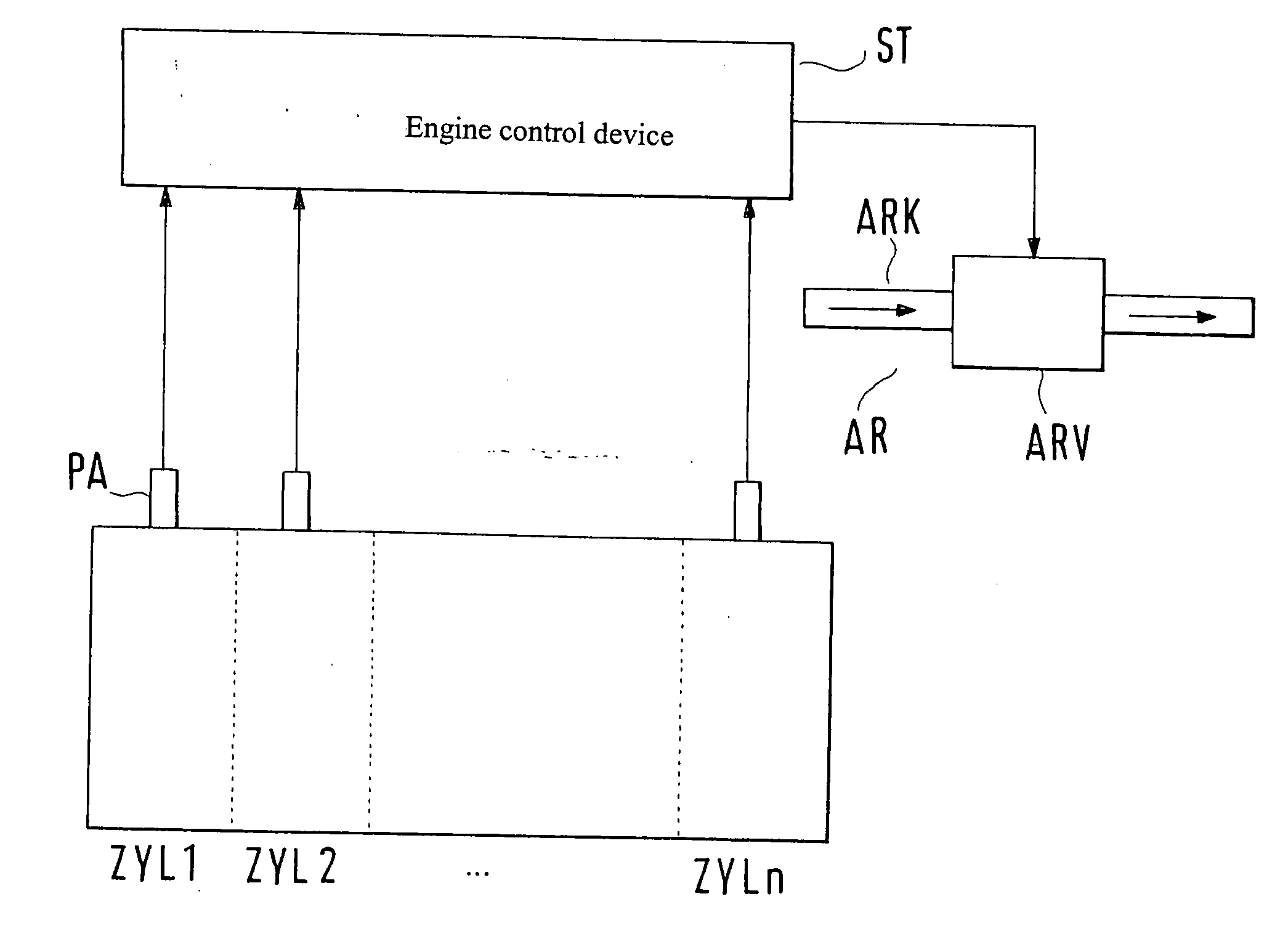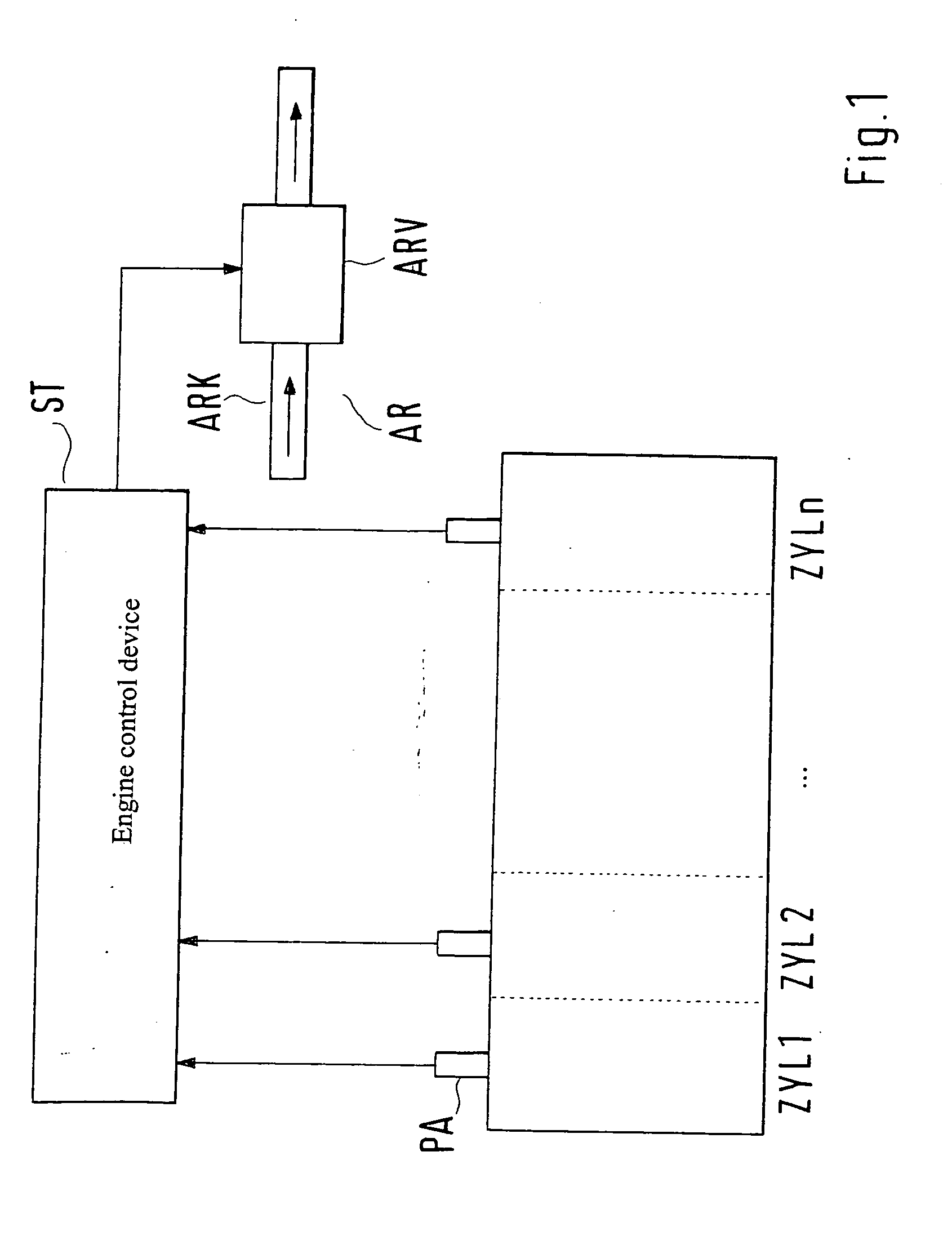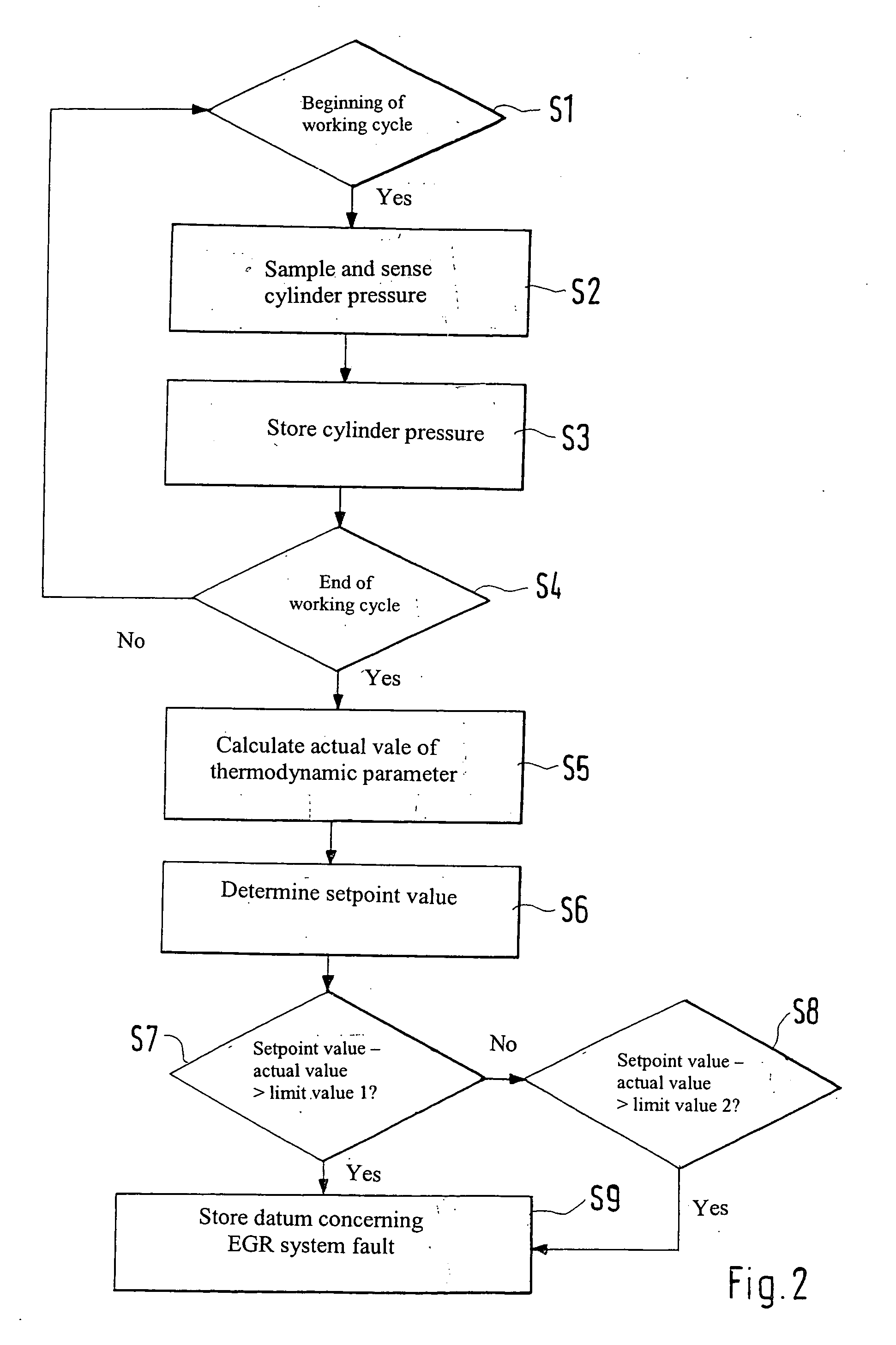Method for Monitoring the Exhaust Gas Recirculation of an Internal Combustion Engine
a technology of internal combustion engine and exhaust gas, which is applied in the direction of machines/engines, electric control, instruments, etc., can solve the problems of large temperature stress on sensors exposed to exhaust gas flow, high cost, and malfunctions
- Summary
- Abstract
- Description
- Claims
- Application Information
AI Technical Summary
Problems solved by technology
Method used
Image
Examples
Embodiment Construction
[0023]FIG. 1 schematically depicts a cylinder assemblage of an internal combustion engine having cylinders ZYL1, ZYL2, . . . ZYLn, which is connected from its output side (not depicted) to its input side (also not depicted) or intake region via an exhaust gas recirculation conduit ARK having an exhaust gas recirculation valve ARV arranged therein for exhaust gas recirculation AR. Usually one such exhaust gas recirculation AR is provided jointly for all cylinders ZYL1 . . . ZYLn, although an individual exhaust gas recirculation AR via respective exhaust gas recirculation conduits ARK is also conceivable. Cylinders ZYL1 . . . ZYLn are equipped with respective pressure transducers PA for the combustion chamber pressure or cylinder pressure, the signals of which transducers are conveyed to a control device ST for processing, evaluation, and optionally activation of exhaust gas recirculation valve ARV. Control device ST is a usual engine control device that performs a plurality of intern...
PUM
 Login to View More
Login to View More Abstract
Description
Claims
Application Information
 Login to View More
Login to View More - R&D
- Intellectual Property
- Life Sciences
- Materials
- Tech Scout
- Unparalleled Data Quality
- Higher Quality Content
- 60% Fewer Hallucinations
Browse by: Latest US Patents, China's latest patents, Technical Efficacy Thesaurus, Application Domain, Technology Topic, Popular Technical Reports.
© 2025 PatSnap. All rights reserved.Legal|Privacy policy|Modern Slavery Act Transparency Statement|Sitemap|About US| Contact US: help@patsnap.com



